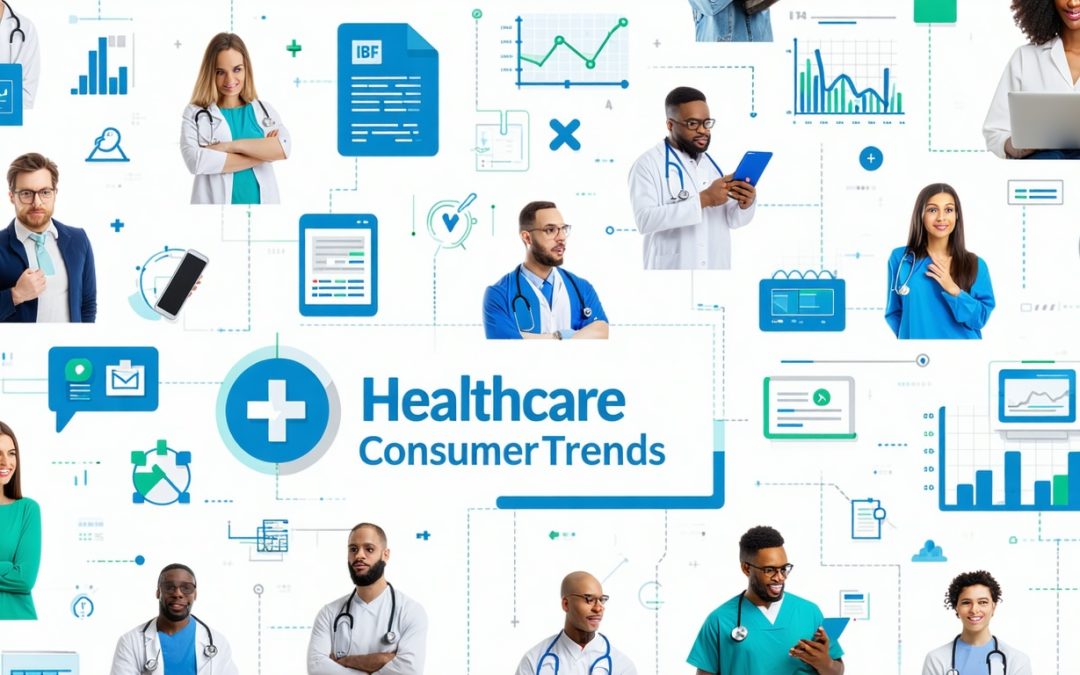Introduction to Healthcare Industry Trends
Importance of Staying Informed
For young professionals considering a career in private healthcare, understanding the latest trends is essential. The healthcare landscape is constantly evolving, influenced by technological advancements, regulatory changes, and shifting consumer expectations. Staying informed about these trends enables professionals to make informed decisions, adapt to changes, and enhance their career prospects. Knowledge of current developments can also help in identifying opportunities for innovation and improvement within the industry.
Overview of Evolving Trends
The healthcare industry is witnessing several key trends that are reshaping how care is delivered and managed. These trends include the rise of telehealth, the integration of artificial intelligence, the shift towards personalized medicine, the movement towards value-based care, and an increased focus on mental health awareness.
The following table summarizes some of the most significant healthcare industry trends:
| Trend | Description |
|---|---|
| Telehealth Revolution | Expansion of remote healthcare services through digital platforms. |
| Artificial Intelligence | Use of AI for diagnostics, treatment recommendations, and operational efficiency. |
| Personalized Medicine | Tailoring medical treatment to individual characteristics and preferences. |
| Value-Based Care | Transition from fee-for-service to outcomes-based reimbursement models. |
| Mental Health Awareness | Increased focus on mental health support and resources in various settings. |
For more insights into specific areas, young professionals can explore related topics such as healthcare marketing trends, healthcare technology trends, and emerging trends in healthcare industry. Understanding these trends will provide a comprehensive view of the current healthcare environment and prepare professionals for future challenges and opportunities.
Telehealth Revolution
Definition and Scope of Telehealth
Telehealth refers to the delivery of healthcare services through digital communication technologies. This includes video conferencing, mobile apps, and remote monitoring tools that allow healthcare providers to connect with patients without the need for in-person visits. The scope of telehealth encompasses a wide range of services, including consultations, follow-ups, and even mental health support.
Telehealth has gained significant traction in recent years, particularly due to the COVID-19 pandemic, which accelerated the adoption of virtual care solutions. As a result, many healthcare providers have integrated telehealth into their practice, making it a vital component of modern healthcare delivery.
Benefits and Challenges of Telehealth Adoption
The adoption of telehealth presents numerous benefits and challenges for both healthcare providers and patients.
Benefits
- Increased Access to Care: Telehealth allows patients in remote or underserved areas to access healthcare services more easily.
- Convenience: Patients can receive care from the comfort of their homes, reducing travel time and associated costs.
- Improved Patient Engagement: Digital tools can enhance communication between patients and providers, leading to better health outcomes.
- Cost-Effectiveness: Telehealth can reduce healthcare costs by minimizing the need for in-person visits and hospitalizations.
Challenges
- Technology Barriers: Not all patients have access to the necessary technology or internet connectivity to utilize telehealth services.
- Regulatory Issues: Varying state laws and regulations can complicate the provision of telehealth services across different regions.
- Privacy Concerns: Ensuring the security and confidentiality of patient information during virtual consultations is critical.
- Limited Scope of Services: Certain medical conditions may still require in-person evaluations, limiting the effectiveness of telehealth for some patients.
| Benefits of Telehealth | Challenges of Telehealth |
|---|---|
| Increased Access to Care | Technology Barriers |
| Convenience | Regulatory Issues |
| Improved Patient Engagement | Privacy Concerns |
| Cost-Effectiveness | Limited Scope of Services |
Understanding these benefits and challenges is essential for young professionals considering a career in private healthcare. Staying informed about the latest healthcare industry trends will help them navigate the evolving landscape of telehealth and its impact on patient care.
Artificial Intelligence in Healthcare
Artificial Intelligence (AI) is transforming the healthcare landscape, offering innovative solutions that enhance patient care and streamline operations. Understanding the applications and impacts of AI is essential for young professionals considering a career in private healthcare.
Applications of AI in Healthcare
AI technology is being utilized in various ways within the healthcare sector. Some of the key applications include:
| Application | Description |
|---|---|
| Diagnostic Tools | AI algorithms analyze medical images and data to assist in diagnosing conditions such as cancer and heart disease. |
| Predictive Analytics | AI systems predict patient outcomes and disease outbreaks by analyzing large datasets, helping healthcare providers make informed decisions. |
| Virtual Health Assistants | Chatbots and virtual assistants provide patients with information, schedule appointments, and answer common health questions. |
| Personalized Treatment Plans | AI analyzes genetic information and patient history to create tailored treatment plans, enhancing the effectiveness of care. |
| Operational Efficiency | AI streamlines administrative tasks, such as billing and scheduling, allowing healthcare professionals to focus more on patient care. |
These applications demonstrate how AI can improve both clinical and operational aspects of healthcare.
Impact on Patient Care and Operations
The integration of AI in healthcare has significant implications for patient care and operational efficiency.
| Impact Area | Description |
|---|---|
| Improved Accuracy | AI enhances diagnostic accuracy, reducing the likelihood of human error and leading to better patient outcomes. |
| Faster Decision-Making | AI tools provide real-time data analysis, enabling healthcare providers to make quicker and more informed decisions. |
| Cost Reduction | By automating routine tasks and improving efficiency, AI can help lower operational costs, which may lead to reduced healthcare costs for patients. |
| Enhanced Patient Engagement | AI-driven tools facilitate better communication between patients and providers, fostering a more engaged patient experience. |
| Data-Driven Insights | AI analyzes vast amounts of data to identify trends and patterns, informing healthcare strategies and policies. |
The impact of AI on patient care and operations is profound, making it a critical trend for young professionals to understand as they enter the healthcare field. For more insights into the evolving landscape, explore our articles on healthcare technology trends and emerging trends in healthcare industry.
Personalized Medicine
Concept of Personalized Medicine
Personalized medicine, also known as precision medicine, refers to a medical model that tailors healthcare treatments to individual characteristics, needs, and preferences. This approach considers factors such as genetics, environment, and lifestyle to create customized treatment plans. By focusing on the unique aspects of each patient, personalized medicine aims to improve the effectiveness of treatments and reduce the risk of adverse effects.
The rise of personalized medicine is driven by advancements in genetic research and technology, allowing healthcare providers to analyze a patient’s genetic makeup and identify the most suitable therapies. This trend is becoming increasingly relevant in various fields, including oncology, cardiology, and pharmacology.
Advantages and Limitations of Personalized Medicine
Personalized medicine offers several benefits, but it also comes with certain limitations. Below is a summary of the advantages and challenges associated with this approach.
| Advantages | Limitations |
|---|---|
| Improved Treatment Efficacy: Tailored therapies can lead to better outcomes for patients. | Cost: Personalized treatments can be more expensive than traditional methods. |
| Reduced Side Effects: By considering individual responses, the risk of adverse reactions can be minimized. | Access to Genetic Testing: Not all patients have access to the necessary genetic tests. |
| Enhanced Patient Engagement: Patients may feel more involved in their treatment decisions. | Data Privacy Concerns: Handling genetic information raises ethical and privacy issues. |
| Targeted Therapies: Specific treatments can be developed for particular genetic profiles, especially in cancer care. | Limited Research: Some areas of personalized medicine are still under-researched, leading to gaps in knowledge. |
As young professionals consider the implications of personalized medicine, it is essential to stay informed about the latest healthcare industry trends and how they may impact patient care and healthcare delivery. For more insights into emerging trends, explore our articles on healthcare technology trends and personalized healthcare trends.
Value-Based Care
The healthcare industry is undergoing a significant transformation with the shift towards value-based care. This model emphasizes the quality of care provided rather than the quantity, aiming to improve patient outcomes while controlling costs.
Transition to Value-Based Care
The transition to value-based care involves moving away from traditional fee-for-service models, where providers are paid for each service rendered. Instead, healthcare providers are incentivized to deliver high-quality care that leads to better health outcomes for patients. This shift is driven by several factors, including rising healthcare costs and the need for improved patient satisfaction.
Key components of value-based care include:
| Component | Description |
|---|---|
| Quality Metrics | Providers are evaluated based on patient outcomes, satisfaction, and adherence to clinical guidelines. |
| Cost Efficiency | Emphasis on reducing unnecessary tests and procedures while maintaining high-quality care. |
| Patient Engagement | Encouraging patients to take an active role in their healthcare decisions and management. |
Implications for Healthcare Providers and Patients
The implications of value-based care are significant for both healthcare providers and patients. For providers, this model requires a shift in focus towards preventive care and chronic disease management. They must invest in data analytics and technology to track patient outcomes and improve care delivery.
For patients, value-based care can lead to improved health outcomes and a more personalized healthcare experience. Patients may benefit from:
| Benefit | Description |
|---|---|
| Enhanced Care Coordination | Better communication among healthcare providers leads to more cohesive treatment plans. |
| Increased Access to Services | Focus on preventive care can reduce the need for costly emergency interventions. |
| Greater Transparency | Patients may have access to information about the quality of care and costs associated with their treatment. |
As young professionals consider their roles in the evolving healthcare landscape, understanding these healthcare industry trends is essential. The shift towards value-based care represents a significant opportunity for innovation and improvement in patient care. For more insights on emerging trends, explore our articles on healthcare marketing trends and healthcare technology trends.
Mental Health Awareness and Support
Rising Focus on Mental Health
In recent years, there has been a significant increase in the focus on mental health within the healthcare industry. This shift is driven by a growing recognition of the importance of mental well-being as a critical component of overall health. Young professionals are particularly affected by mental health issues, often facing stress and anxiety related to their careers and personal lives.
Statistics indicate that mental health conditions are on the rise. According to recent studies, approximately 1 in 5 adults experience mental illness each year. This highlights the need for increased awareness and support systems in both personal and professional environments.
| Year | Percentage of Adults Experiencing Mental Illness |
|---|---|
| 2018 | 19.1% |
| 2019 | 20.2% |
| 2020 | 21.0% |
| 2021 | 22.3% |
Initiatives and Resources for Mental Health in the Workplace
Organizations are increasingly implementing initiatives to support mental health in the workplace. These initiatives aim to create a supportive environment that encourages open discussions about mental health and provides resources for employees.
Common workplace initiatives include:
- Employee Assistance Programs (EAPs): These programs offer confidential counseling services and resources for employees facing mental health challenges.
- Mental Health Days: Some companies allow employees to take days off specifically for mental health purposes, recognizing the importance of self-care.
- Workshops and Training: Organizations may provide training sessions on stress management, mindfulness, and resilience to equip employees with tools to cope with mental health challenges.
Additionally, many companies are adopting flexible work arrangements to help employees balance their professional and personal lives. This flexibility can significantly reduce stress and improve overall mental well-being.
For more insights into the evolving landscape of mental health in the workplace, consider exploring healthcare workforce trends and healthcare consumer trends. These resources provide valuable information on how mental health awareness is shaping the future of the healthcare industry.












0 Comments